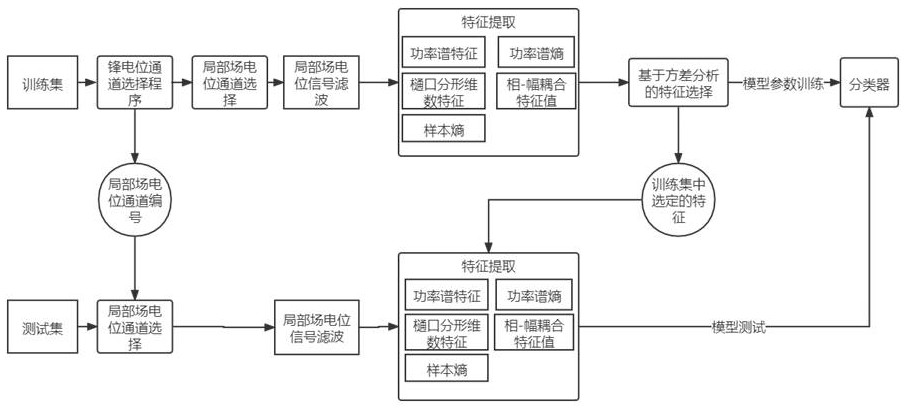Depression state detection system based on lateral brain habenular nucleus signals
A state detection, lateral habenula technology, applied in diagnostic recording/measurement, medical science, psychological devices, etc., can solve problems such as affecting classification accuracy, poor signal quality, and many artifacts, so as to facilitate signal analysis and extraction Features, improve the accuracy of classification, reduce the effect of misclassification probability
- Summary
- Abstract
- Description
- Claims
- Application Information
AI Technical Summary
Problems solved by technology
Method used
Image
Examples
Embodiment Construction
[0029] The present invention will be further described in detail below with reference to the accompanying drawings and embodiments. It should be noted that the following embodiments are intended to facilitate the understanding of the present invention, but do not limit it in any way.
[0030] In this example, C57BL / 6 mice were used to create a depression mouse model. The original EEG signal was recorded by Plexon Inc. The original signal contained 16 channels and the sampling rate was 40KHz. 16 electrodes were implanted into the lateral habenula of C57BL / 6 mice, and one original signal channel could separate zero to multiple spike channel signals and one local field potential channel signal; the spike channel signal was obtained by using Plexon Offline Sorter software to obtain the SpikeSort sequence ; The local field potential channel signal is obtained by low-pass filtering the original EEG signal to 500Hz and then resampling at a sampling rate of 1KHz; the two are finally m...
PUM
 Login to View More
Login to View More Abstract
Description
Claims
Application Information
 Login to View More
Login to View More - R&D
- Intellectual Property
- Life Sciences
- Materials
- Tech Scout
- Unparalleled Data Quality
- Higher Quality Content
- 60% Fewer Hallucinations
Browse by: Latest US Patents, China's latest patents, Technical Efficacy Thesaurus, Application Domain, Technology Topic, Popular Technical Reports.
© 2025 PatSnap. All rights reserved.Legal|Privacy policy|Modern Slavery Act Transparency Statement|Sitemap|About US| Contact US: help@patsnap.com



